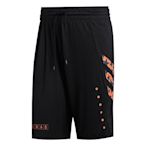nike運動短褲 相關
廣告過去一個月已有 超過 1 萬 位使用者造訪過 oneboy.com.tw
長時穿著也舒適!石墨烯成分抑菌消臭,循環透氣不燜熱,壓力值由下往上遞減,放鬆雙腿一件搞定. 新貨熱發燒!女神都這樣穿,280Den壓力褲,日常百搭不出錯,高彈性面料,自在活動不彆扭
- 踩屎拖2.0任3雙$1500!
後跟加高氣墊,舒壓減震踩得到
可拆式鞋墊,簡單清潔0死角!
- ONE BOY輕鋒衣4.0全面特惠
輕鋒衣任2件只要$2500
體驗有一件應萬變的方便
- 暇鋒系列最新褲款別錯過
西裝褲、工裝褲、休閒褲潮流登場
溫暖大地色系,都會街頭時尚!
- Skin系列
最新主打SkinBra舒服得像沒穿一樣
打造舒適裸膚感 男女生都不能錯過
- 新品登場【雙面衝鋒衣】
兩面皆可穿,機能時尚不怕天冷雨
SGS檢驗保證,蓄熱防潑一級棒!
- 暇鋒系列上衣熱賣中!
長T大學T、連帽外套又chill又暖
時下潮流版型,全年齡都超適合!
- 踩屎拖2.0任3雙$1500!
搜尋結果
 $1750【Simple Shop】NIKE 運動短褲 彈性布 大口袋 工裝 短褲 休閒短褲 黑色 男款 DD7042-010Simple shop日本潮流
$1750【Simple Shop】NIKE 運動短褲 彈性布 大口袋 工裝 短褲 休閒短褲 黑色 男款 DD7042-010Simple shop日本潮流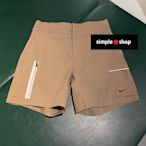 $1750【Simple Shop】NIKE 運動短褲 彈性布 大口袋 工裝 短褲 休閒短褲 卡其色 男款 DD7042-208Simple shop日本潮流
$1750【Simple Shop】NIKE 運動短褲 彈性布 大口袋 工裝 短褲 休閒短褲 卡其色 男款 DD7042-208Simple shop日本潮流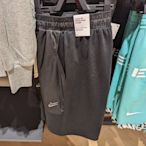 $1480南🔥2023 4月 NIKE 運動短褲 休閒 口袋 雙勾 綁帶 刺繡 透氣 針織 男款 黑 DX0204-010◆南 DESIGN只賣正品◇
$1480南🔥2023 4月 NIKE 運動短褲 休閒 口袋 雙勾 綁帶 刺繡 透氣 針織 男款 黑 DX0204-010◆南 DESIGN只賣正品◇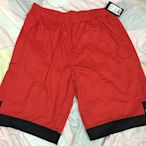 $686全新正品現貨 售完為止 NIKE 運動 短褲 尺碼 褲長約65褲寬約44 5XL 按標籤價7折售出 839437-600tersefong
$686全新正品現貨 售完為止 NIKE 運動 短褲 尺碼 褲長約65褲寬約44 5XL 按標籤價7折售出 839437-600tersefong![保證正品? nike 運動 短褲 女 NSW SHORT LOGO TAPE 串標 邊條 休閒 慢跑 路跑 健身 黑爆款 保證正品? nike 運動 短褲 女 NSW SHORT LOGO TAPE 串標 邊條 休閒 慢跑 路跑 健身 黑爆款]() $1275保證正品? nike 運動 短褲 女 NSW SHORT LOGO TAPE 串標 邊條 休閒 慢跑 路跑 健身 黑爆款Y1291829316
$1275保證正品? nike 運動 短褲 女 NSW SHORT LOGO TAPE 串標 邊條 休閒 慢跑 路跑 健身 黑爆款Y1291829316![NIKE 運動 短褲 按標籤價不到7折 尺碼XXL 型號 893807-410 買就送 Nike 球衣背心 NIKE 運動 短褲 按標籤價不到7折 尺碼XXL 型號 893807-410 買就送 Nike 球衣背心]() $1100NIKE 運動 短褲 按標籤價不到7折 尺碼XXL 型號 893807-410 買就送 Nike 球衣背心tersefong
$1100NIKE 運動 短褲 按標籤價不到7折 尺碼XXL 型號 893807-410 買就送 Nike 球衣背心tersefong![nike運動短褲 nike運動短褲]() $450nike運動短褲Y2508255998
$450nike運動短褲Y2508255998![[Fashion Furious] NIKE 運動短褲 DM5488-010 XXL [Fashion Furious] NIKE 運動短褲 DM5488-010 XXL]() $1500[Fashion Furious] NIKE 運動短褲 DM5488-010 XXLFashion Furious
$1500[Fashion Furious] NIKE 運動短褲 DM5488-010 XXLFashion Furious![NIKE 全新運動短褲 NIKE 全新運動短褲]() $1800NIKE 全新運動短褲Y3967980526
$1800NIKE 全新運動短褲Y3967980526![100原廠%公司貨 adidas愛迪達 nike運動短褲男 夏季新品男子運動籃球短褲基礎五分褲 GE1078 100原廠%公司貨 adidas愛迪達 nike運動短褲男 夏季新品男子運動籃球短褲基礎五分褲 GE1078]() $1201100原廠%公司貨 adidas愛迪達 nike運動短褲男 夏季新品男子運動籃球短褲基礎五分褲 GE1078七七專業代購
$1201100原廠%公司貨 adidas愛迪達 nike運動短褲男 夏季新品男子運動籃球短褲基礎五分褲 GE1078七七專業代購![Nike 運動短褲 運動休閒 短褲 尺寸:XL Nike 運動短褲 運動休閒 短褲 尺寸:XL]() $1100Nike 運動短褲 運動休閒 短褲 尺寸:XL專業運動 時尚休閒
$1100Nike 運動短褲 運動休閒 短褲 尺寸:XL專業運動 時尚休閒![Nike 運動短褲 籃球短褲 短褲 尺寸:S~XL Nike 運動短褲 籃球短褲 短褲 尺寸:S~XL]() $860Nike 運動短褲 籃球短褲 短褲 尺寸:S~XL專業運動 時尚休閒
$860Nike 運動短褲 籃球短褲 短褲 尺寸:S~XL專業運動 時尚休閒
Nike, along with Best Buy, partnered with Creative Commons to create GreenXchange. The project was announced earlier this year at the World Economic Forum in Davos, Switzerland. Under GreenXchange, member companies can make patents and know-how
They key to the value of the Nike brand is that jogging or simply wearing a shoe feels different if the logo is there. The more this particular affective pattern is repeated across different activities and social situations, the more valuable the Nike brand (presently at $ 9.26 billion).
Nike’s trailblazing Reuse-A-Shoe scheme (first launched waaay back in1990!) has collected and recycled over 25 million pairs of worn-out Nike shoes to-date. Old shoes are sliced, separated and ground up into a material called Nike Grind, which is then used in creating athletic and playground surfaces, as well as a variety of Nike products.
For sports apparel, Nike’s NIKEiD let’s users customize the colors and text of different models of shoes, clothes, bags, and wristwatches for themselves or their entire team. Prints and clothes aren’t the only things consumers can customize.
- Description
- Contents
- Interview
- Excerpts
- About The Authors
- Review
1. Zoe Romano: “Ethical Economy (Columbia University Press), written by Adam Arvidsson in collaboration with Nicolai Peitersen, introduces to ethical economics and interprets the begin of a new, radically different economic system in which production is mainly collaborative and social, and in which the value is based on the quality of social intera...
Preface to the Ethical Economy 1. Chapter 1. Value Crisis p.15 2. Chapter 2. Intangibles p. 36 3. Chapter 3. Publics p. 65 4. Chapter 4. Value p. 99 5. Chapter 5. Measure p. 129 6. Conclusion p. 154
By Zoe Romano: “Zoe Romano: How do you see ethical phenomena like the signal of the emergence of a new way of production (what you call ‘Ethical Economy’) in addition to the emergence of a market niche, term often used and abused to clean up the image of a company? Are we really facing a substanstial change? Adam Arvidsson: The reason why these phe...
Preface to the Ethical Economy ; see also the earlier draft: Introduction to the Ethical EconomyValue Crisis"Adam Arvidsson teaches sociology at the University of Milano, Italy, and lectures on creative industries at the Copenhagen Business School. He has written on brands, the information economy, and cities and creativity. His most recent book is Brands: Meaning and Value in Media Culture. He is based in Milan. Nicolai Peitersen has founded and cofound...
Hazel Henderson: "The Ethical Economy introduces two major intellectuals mapping the transition from early industrial manufacturing and its economics based on objects (things you can drop on your foot) to today's information economies where intellectual property, intangibles, brands and reputation are the new source of value. Authors Adam Arvidsson...
IP Maximalists. IP Maximalists are those who want to strengthen Intellectual Property protections to the maximum amount possible, to protect private monopoly interests, in disregard of any human cost, such as the millions who die from too expensive IP-protected medecines. Source: overview by Prof. Susan K. Sell, Susan.sell@gmail-com.
As Thijs Markus writes says about Nike in the Rick Falkvinge blog, if you want to sell $5 shoes for $150 in the West, you better have one heck of a repressive IP regime in place. Hence the need for SOPA, PIPA , ACTA and other attempts to criminalize the right to share.
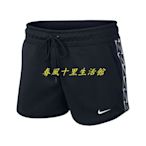
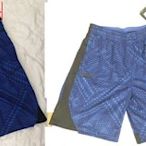
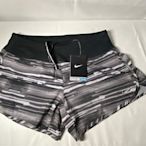
![[Fashion Furious] NIKE 運動短褲 DM5488-010 XXL [Fashion Furious] NIKE 運動短褲 DM5488-010 XXL](https://s.yimg.com/fz/api/res/1.2/2lPHeoJ8IpdN4F9CJDeavA--~C/YXBwaWQ9c3JjaGRkO2ZpPWZpbGw7aD0xNDY7cT04MDt3PTE0Ng--/https://ct.yimg.com/xd/api/res/1.2/oZd4py36Y5CfZr8pLzHa0g--/YXBwaWQ9eXR3YXVjdGlvbnNlcnZpY2U7aD00MDA7cT04NTtyb3RhdGU9YXV0bzt3PTQwMA--/https://s.yimg.com/ob/image/e6b1fd0c-12e5-4b68-ae2e-71009bef29ba.jpg)

